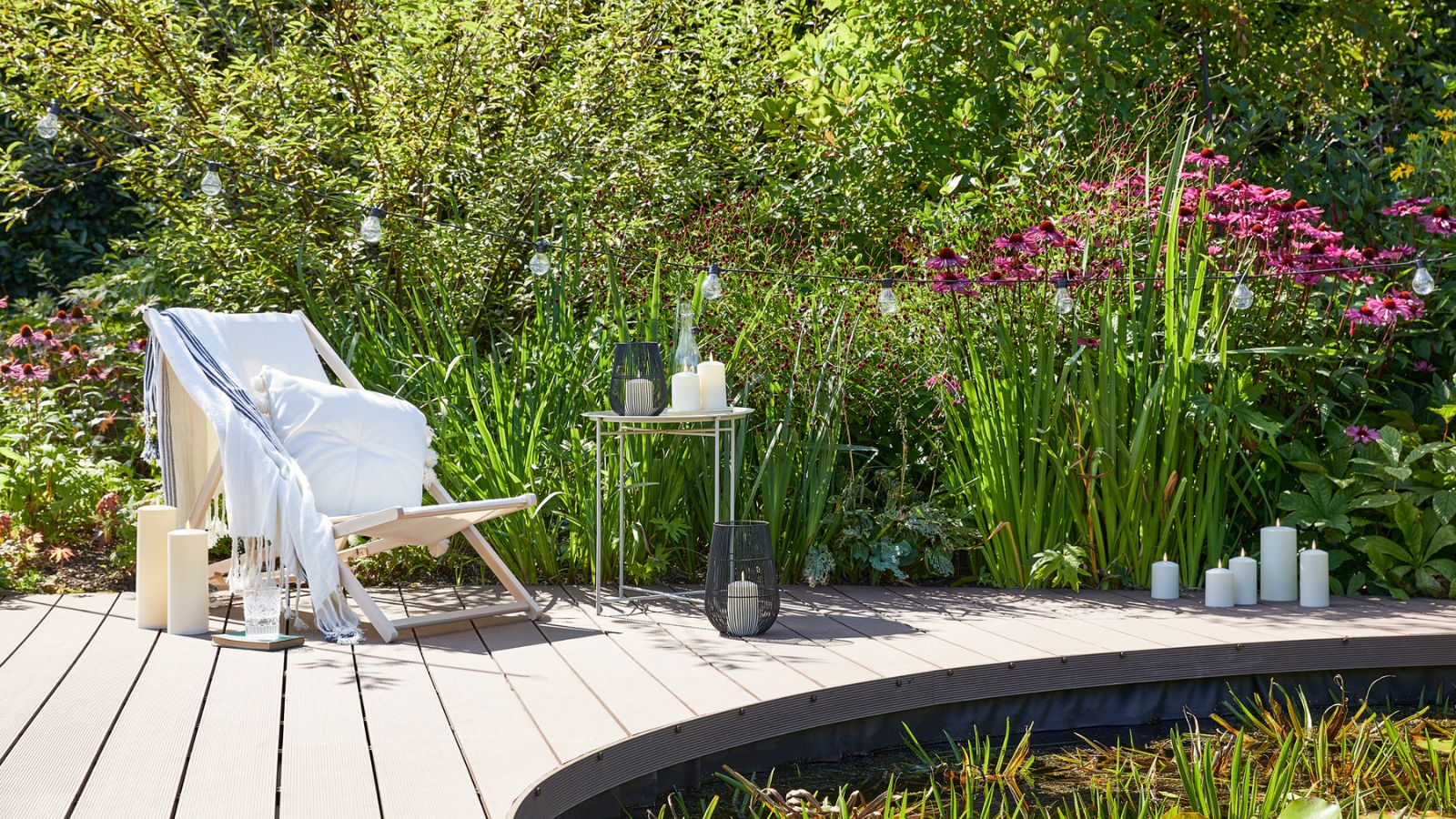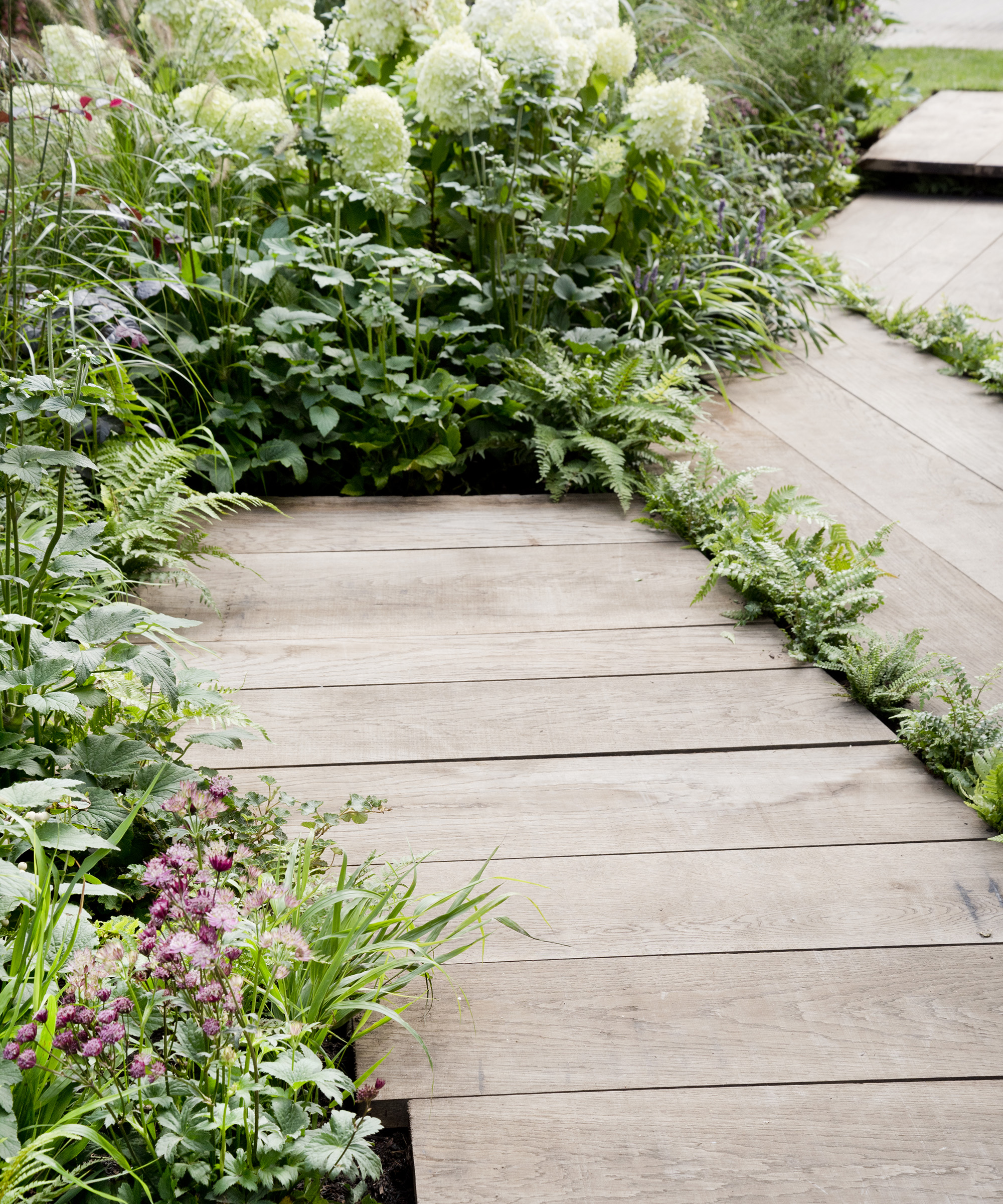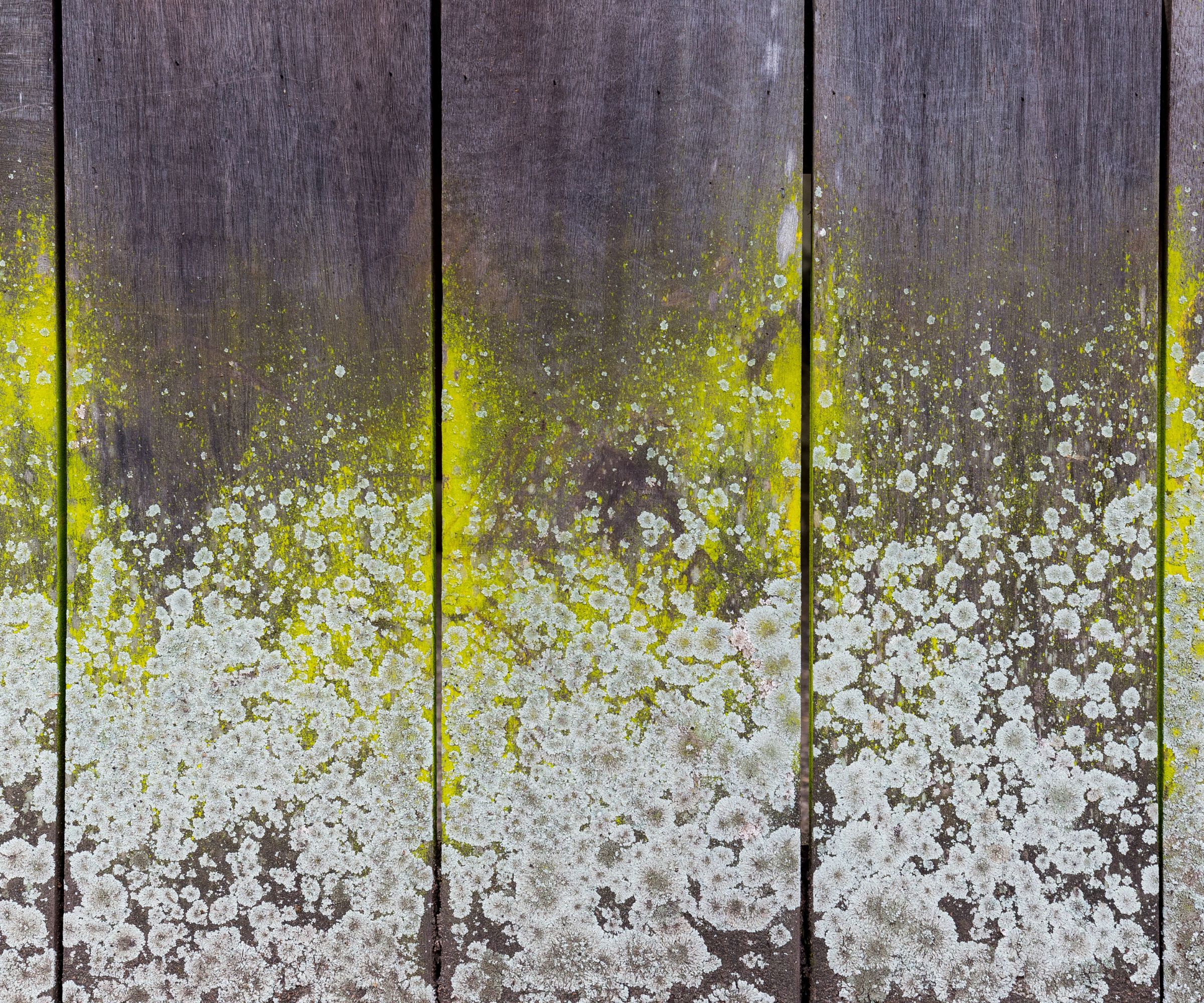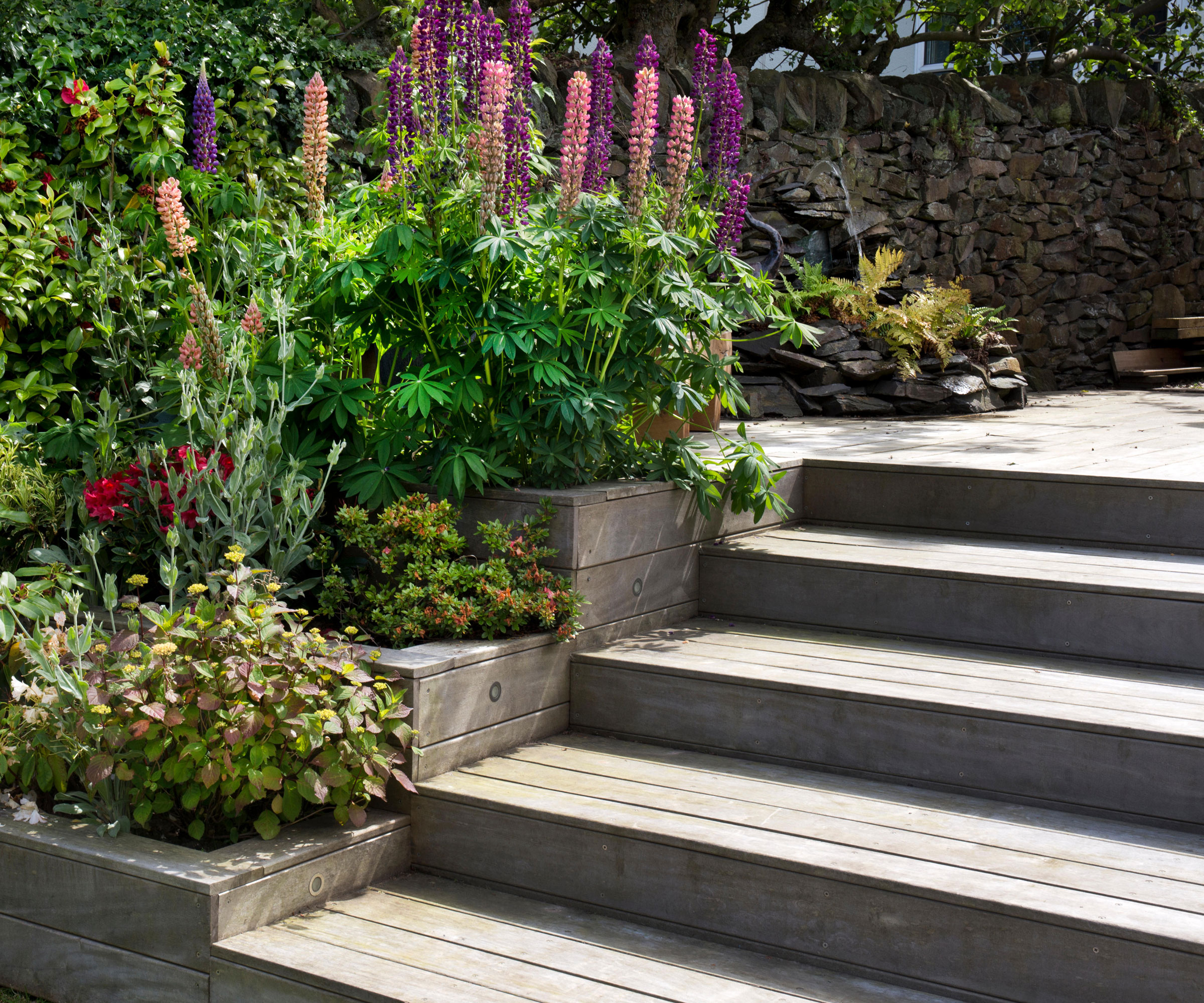How to check your decking for winter damage – 5 simple steps to ensure you don't overlook important warning signs
Although winter can take its toll on decking, most issues can be easily rectified if swiftly identified and dealt with – here's what to look out for, according to experts


As we say goodbye to the cold days of winter, many of us are now sprucing up our outside spaces ready for spring and summer. One key area to inspect in your yard after the cold winter weather is your outside decking. Winter deck damage can be cosmetic, such as mold growth in damp or shady areas, or it can be more serious, such as split boards from repeated frosts.
The first, and most important step when learning how to preserve decking is assessing it for any damage. This will not just prevent the need for further repairs, but it will also ensure that the deck is safe and that it still looks good, plus, it will extend your deck's lifespan.
Our experts have shared their top tips for assessing decking for winter damage, so you can take action to ensure your backyard deck stays in good-as-new condition for as long as possible.
How to check your decking for winter damage
Some damage will be obvious, such as a board that has snapped or a collapsed railing, however, other signs are more subtle. To avoid overlooking issues that can become increasingly destructive, a thorough and full assessment of your deck is crucial to ensure no damage goes unnoticed and eventually worsens, requiring costly repairs.
1. Scan for surface damage

During winter, moisture can seep into cracks and gaps in wood, causing the material to expand and contract as it freezes and thaws, which can lead to warping, cracking, and splintering of the deck's surface. Thus, the initial step in assessing your deck post-winter is to check for any surface damage caused by this process.
Remove everything from your decking and clean the deck so you can properly inspect it. Sweep off any leaves, branches, or dirt, and hose down anything that may have accumulated on the deck during winter.
'Then, you can take an overview of the entire deck. Andriy Boyko, founder of A.O. Handy Inc., advises: 'Consider its overall condition, looking for any obvious signs of surface damage. Is it warped? Cracked? Splintering? If it’s painted, how is the paint surface?'
Doing this can indicate any more significant issues and inform the necessary steps for maintenance and repair.
2. Inspect for insects

'Most insects won’t cause a lot of damage to your property over the cold months, but they may look for places to overwinter, such as spots like your deck,' explains Brett Bennett, director of operations at PURCOR Pest.
'If they’ve found a home in your deck over the winter, they may start to cause damage. So, it can be wise to inspect your deck for signs of insects, or call a pest control specialist to do this.'
It's especially important to check for the presence of burrowing insects as they can cause irreversible structural damage. For example, you will need to get rid of carpenter ants before they dig into the wood entirely.
To check your deck for insect activity, inspect posts, beams, joists, and deck boards for signs of damage like holes, tunnels, or sawdust-like residue which may indicate the presence of burrowing insects like carpenter ants or termites.
With a screwdriver or awl, you can gently probe the wood to check for soft spots that may signal insect damage or other decay.
3. Test for the presence of mold

It's essential to check your deck for mold or mildew over winter, which can be brought on by moisture accumulation from rain, snow, humidity, organic matter, or even poor drainage, in addition to the darker conditions and reduced air circulation.
'Carefully inspect the surface of and between the decking boards and support structures for rot, decay, discoloration, fuzzy patches, or black spots' advises Andriy Boyko. 'Look closely near the edges, at the base of the deck, under furniture, near planters, and in areas prone to standing water.'
Again, you can use a flathead screwdriver to probe the wood to find damp portions that have not dried after the rest of the deck has. If the screwdriver easily enters the wood, it’s a sign that the wood is rotten.
Another way to test for elevated moisture levels in the wood that may indicate mold growth conditions is using a wood moisture meter, like this from Amazon.
If you believe mold may be growing on your deck, be sure to wear protective gear such as gloves, a mask, and safety goggles when inspecting your deck to avoid potential exposure to mold spores. This glove and googles kit from Walmart should do the trick.
4. Check its structural Integrity

Repeated exposure to melting ice and snow can strip away the wood's protective sealant, causing the wood to deteriorate. This can even cause the deck boards to bend and sag, leading to structural damage.
To check for structural damage:
1. 'Carefully examine the perimeter support posts and all beams and joists on the deck itself, looking for any evidence of sagging, settling, splitting, or swaying, especially at the base where they meet the ground,' advises Andriy Boyko. 'You can use the screwdriver test to prove for spots that give easily, indicating decay.'
2. Next, focus on locations where the deck connects to a building or another structure. Look for loose or corroded fasteners and evidence of any gaps or separation of the deck from the building.
3. Check all fasteners (screws, nails, bolts) and other connections for rust or corrosion, and the surrounding area to ensure there are no signs of rot or water damage around the attachment points.
4. 'Examine the railing system to ensure that there are no loose or damaged components,' continues Andriy Boyko. 'Check the balusters (the vertical rods that support the banister of a staircase) for signs of damage, breakage, or rot; make sure the spacing is correct and the balusters are securely fastened. Try pushing on the railings to make sure that they are secure and attached to the deck.'
5. Assess waterproofing and sealing

Although it may not seem the most important aspect to check on after enduring the inevitable wear of winter, checking the waterproofing and sealing of your deck is essential for its long-term integrity, and shouldn't be skipped as part of this annual inspection.
Aside from visual indicators of damage, such as cracks, peeling sealant, mold growth, or discoloration, you can test the effectiveness of the deck's waterproofing by checking for water absorption. To do this, sprinkle water onto various areas of the deck's surface. If the water forms droplets that sit on the deck's surface, this will indicate the waterproofing is intact, however, if it quickly absorbs into the wood, the sealant may need to be reapplied.
You should also consider resealing your deck in drier months regardless. Exposure to UV radiation from the sun can cause the wood to fade, discolor, and weaken over time, making it more susceptible to surface damage like cracking and splitting if not properly protected.
If you are unsure of the condition of your decking but have reason to suspect it is damaged, hiring a professional to inspect your deck can ensure you protect it long-term and catch any problems before they progress. A professional can often spot issues you can’t and provide personalized recommendations to repair or maintain them, such as how to remove green mold from a wood deck.
Sign up to the Homes & Gardens newsletter
Design expertise in your inbox – from inspiring decorating ideas and beautiful celebrity homes to practical gardening advice and shopping round-ups.

Lola Houlton is a news writer for Homes & Gardens. She has been writing content for Future PLC for the past six years, in particular Homes & Gardens, Real Homes and GardeningEtc. She writes on a broad range of subjects, including practical household advice, recipe articles, and product reviews, working closely with experts in their fields to cover everything from heating to home organization through to house plants. Lola is a graduate, who completed her degree in Psychology at the University of Sussex. She has also spent some time working at the BBC.
-
 5 surprising but brilliant ways to clean with old socks – from perfectly buffing stainless steel to deterring pests naturally and more
5 surprising but brilliant ways to clean with old socks – from perfectly buffing stainless steel to deterring pests naturally and moreTackle dust in tricky corners, clean your mirrors and even banish bad odors with those rogue single socks
By Andy van Terheyden Published
-
 How to grow astilbe – expert advice on cultivating this shade-tolerant flowering perennial
How to grow astilbe – expert advice on cultivating this shade-tolerant flowering perennialShade-tolerant and pest-resistant - astilbe are hardy and tough perennials that can thrive in many settings
By Ellen Wells Published